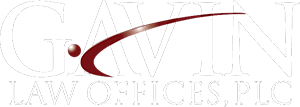Last month, attorney Courtney Reigel attended a webinar addressing ongoing delays at the World Intellectual Property Organization (WIPO). Specifically, the webinar discussed the increase in the overall number of Uniform Domain-Name Dispute-Resolution Policy (UDRP) complaints WIPO has received since the beginning of the pandemic.
Domain name registrars such as GoDaddy are required to follow the UDRP. The UDRP establishes an expedited administrative process for resolving disputes involving the registration of internet domain names. While other trademark-related legal matters must often be resolved through arbitration or litigation in federal court (which can be costly and time consuming), holders of trademark rights may file UDRP complaints with WIPO or another approved dispute resolution service provider to resolve issues involving abusive registrations of domain names (e.g., “cybersquatting”). UDRP complaints generally offer an affordable, efficient, and straightforward option for us to resolve domain disputes for clients.
While UDRP complaints remain a useful tool for addressing domain name matters such as cybersquatting and “typo-squatting,” WIPO is currently experiencing delays in processing times for reviewing such complaints and issuing decisions.
Generally, the cause for the delay is the increase in overall number of UDRP complaints being filed with WIPO. 2020 was a record-breaking year for the number of domain name disputes filed with the organization. However, this year is already on track to surpass 2020 in number of domain name disputes filed. The increase in complaints is due to several factors, including the fact that there has generally been more internet activity as people shopped and worked from home during the pandemic. Additionally, the pandemic created new opportunities for cybersquatters to register and use domain names that contain a trademark plus the terms “coronavirus,” “covid,” or “vaccine,” for example. The ICANN WHOIS service used to investigate registrant information for potentially infringing domain names no longer offers the same information it used to. Due to privacy laws such as Europe’s General Data Protection Regulation, as well as the increase in number of privacy and proxy services registrants can use, registrant information (an individual or business’s name, address, and contact information) is no longer readily available. In some instances, the only way for trademark holders to determine who is responsible for registering a domain that appears to infringe their intellectual property rights is to actually file a UDRP complaint and wait for the domain’s registrar to provide such information. Further, the lack of registrant information makes it difficult to combine complaints involving several domain names that have the same registrant together into a single complaint (previously a common practice), which is also driving up the number of overall complaints.
Attorneys can help trademark holders monitor for potentially infringing domain names and enforce their rights, which often includes preparing and filing a UDRP complaint. In light of the increase of bad actors online, such monitoring can be critical for preventing trademark dilution and avoiding the harm that can be caused by infringing domain names. We can also draft complaints that clearly articulate trademark holders’ rights and address key issues to assist WIPO with reviewing complaints and issuing decisions as quickly as possible. The pandemic and changing laws compel a more strategic approach for handling domain name disputes, and we continue to monitor developments and are readily available to help clients with these matters.
– Rina Van Orden, Esq. & Courtney Reigel, Esq.
